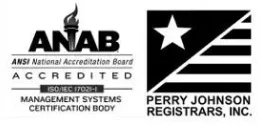Home /
Articles /
Aerospace Tragedies: The Hindenburg Disaster
Aerospace Tragedies: The Hindenburg Disaster
The Hindenburg was popularized by its fiery implosion on national television in 1937. In fact, the majority of people only remember the Hindenburg for its disastrous fate, rather than its technological achievements. Before it burst into flames, the Hindenburg was heralded as the fastest and most leisurely way of crossing the Atlantic Ocean. The isolated event that caused a reporter to cry out in hysterics continues its legacy as the one of the greatest transportation vehicles to ever patrol the skies.
The Graf Zeppelin proved its viability as a long range passenger airship, insomuch that the Zeppelin Company vowed to create a fleet of airships specifically for intercontinental travel. The Zeppelin Company originally designed the LZ-128, a hydrogen-powered passenger airship measuring 761 feet long, to achieve its aspirations as a transportation agency. Unfortunately, the fiery accident of a British airship caused the Zeppelin Company to alter its plans by using helium as a precaution. Helium weighs heavier than hydrogen; therefore, it provides less lift than its counterpart. The Zeppelin Company abandoned their plans of building the LZ-128 in favor of designing the larger LZ-129 model. The Zeppelin Company decidedly named the LZ-129 airship, “The Hindenburg.” The Hindenburg measured approximately 804 feet long with a diameter of 135 feet wide, making it one of the largest objects to ever fly.
The Zeppelin Company started to construct the Hindenburg during the autumn months of 1931; however, it halted its progress due to a lack of funds during the Great Depression. The Nazi Party had no initial interest in lighter-than-air flight until Joseph Goebbels, the propaganda minister of the Nazi regime, convinced the Party that the Hindenburg could showcase Germany's power and technological advancement to the world. As a result, Goebbels offered the Zeppelin Company two million Germany marks as a financial incentive to complete the LZ-129 airship. In addition, Herman Goring offered nine million German marks to complete the Hindenburg; however, he demanded the division of the Zeppelin Company into two firms, effectively dissolving the original leadership of the renowned airship company.
Nazi officials quickly gained awareness of the symbolic value that the Hindenburg offered to the Party. In fact, the Party launched the Hindenburg for propaganda flights alongside the Graf Zeppelin. The Nazi Party arranged to have the Hindenburg fly over at public events, such as the seventy-four hour propaganda flight that supported Adolf Hitler's decision to militarize the Rhineland. In addition, the Nazi Party arranged to have Max Schmeling transported back to Germany on the Hindenburg after defeating African-American Joe Louis in a boxing match. Joseph Goebbels viewed this transportation arrangement as a subliminal hint that Germany remained at the top of the power grid in the world's infrastructure.
The Hindenburg made its first flight during the early spring months of 1936, which lasted for three hours and six minutes. The Party launched test flights to ensure the safety of the airship before carrying passengers aboard for long range travel. The Hindenburg carried eighty reporters as its first passengers on March 23rd, 1936 that stretched from Friedrichshafen to Lowenthal. The Hindenburg made its series of endurance flights during the earlier part of March of 1936 in preparation for its first intercontinental crossing across the Atlantic Ocean. The Hindenburg encountered its first in-flight damage when Ernst Lehmann agreed to make a propaganda flight in unfavorable gusty conditions. As a result, the Hindenburg's crew lost control on the ground, resulting in a rifted lower fin.
The Hindenburg became an iconic symbol of Nazi pride when it flew over the Nuremberg Nazi Party Rally on September 14th, 1936. It formed the Swastika over Nuremberg alongside seventeen other aircraft. Earlier that year, the Hindenburg carried fifty passengers between Germany and the United States with swift ease. The Hindenburg carried wealthy individuals, reporters, celebrities, and members of the Nazi Party on its maiden voyage. The LZ-129 hosted the first Catholic Mass while suspended in the air, and NBC broadcasted the airship's lightweight piano for all to hear. The Hindenburg completed its transatlantic flight in two and a half days, a feat unmatched by the fastest ocean liners of that time. The airship later shattered its own record by completing a transatlantic flight in less than two days.
Passengers paid roughly four hundred dollars for a one-way ticket from Europe to North America. In contrast, the fastest ocean liner only charged one hundred and fifty seven dollars for a first class ticket to North America. The Zeppelin Company made additional revenue from its mail delivery service. The Hindenburg successfully crossed the Atlantic Ocean thirty four times and carried three thousand five hundred passengers by the end of its opening year. In October of 1936, the Hindenburg carried seventy-two wealthy passengers from the United States to Germany on the influential flight called the Millionaires Flight.
After the successful completion of the Hindenburg's opening season, it set forth on 18 round trip flights between Europe and the United States in 1937. During the transition period between 1936 and 1937, the Hindenburg had several renovations done to it in Frankfurt, Germany. In fact, the airship's company operated the LZ-129 using hydrogen, which provided a greater lift than helium. The airship's maintenance team also added other passenger cabins to take advantage of the added lift. It made six successful flights in 1937 before crashing at Lakehurst, New Jersey. The Hindenburg disaster killed thirteen of the thirty-six passengers, twenty-two crewmen, and one employee of the ground handling team. The Hindenburg disaster also closed the chapter on zeppelin travel forever.
Follow these links to learn more about the Hindenburg disaster:


